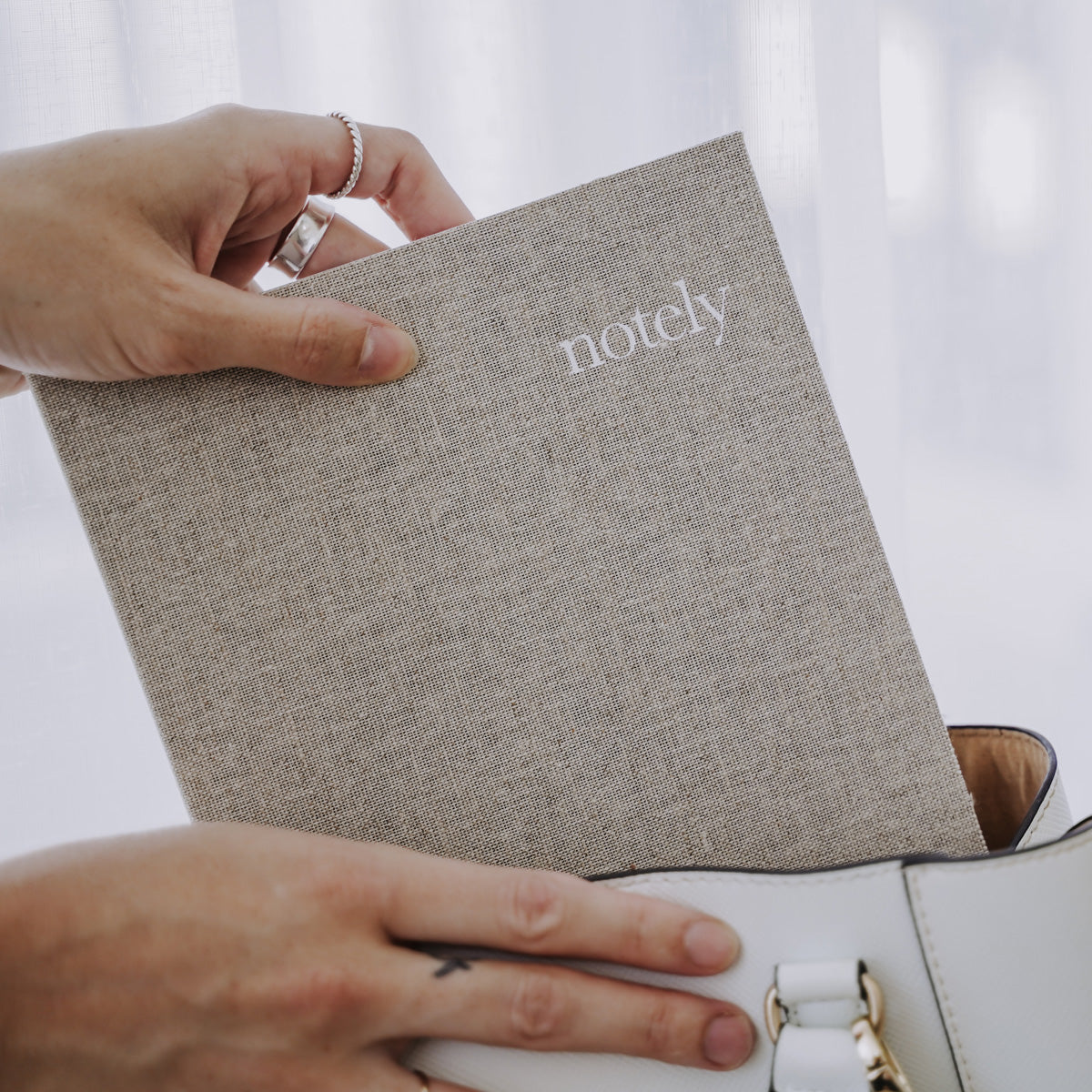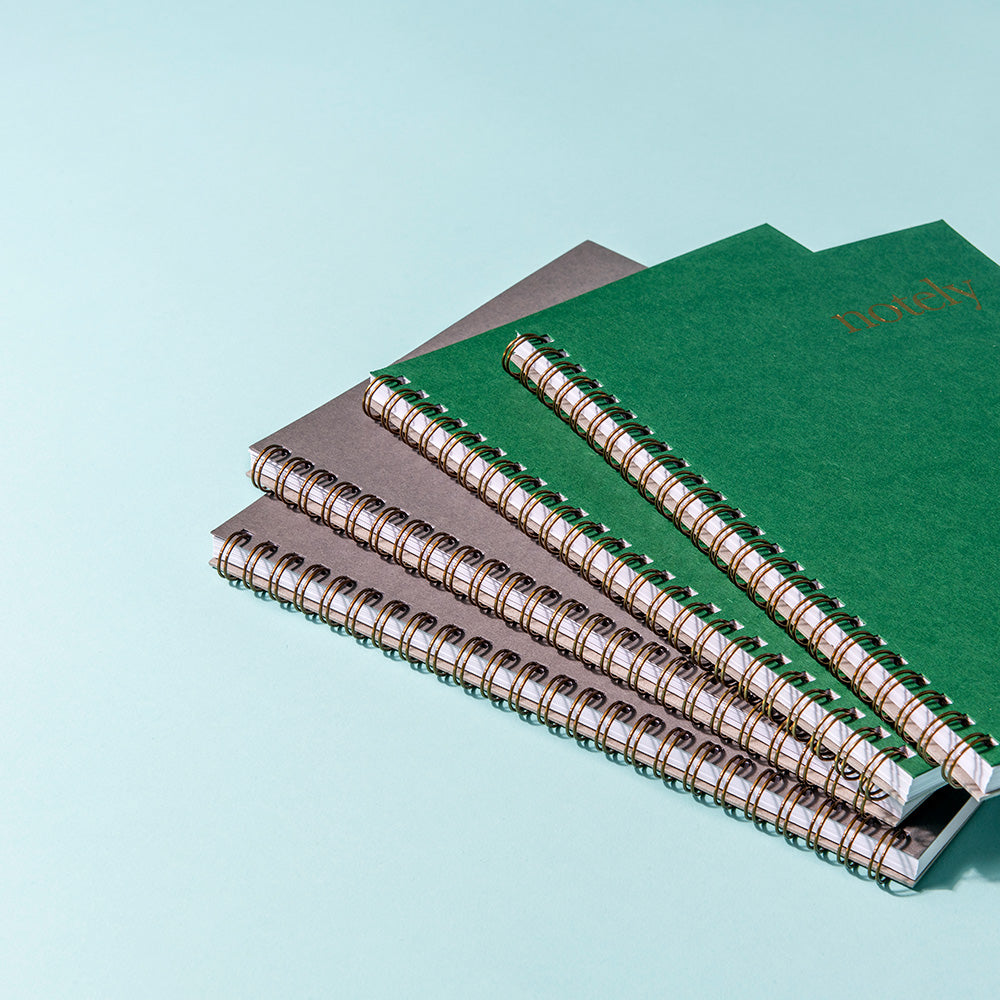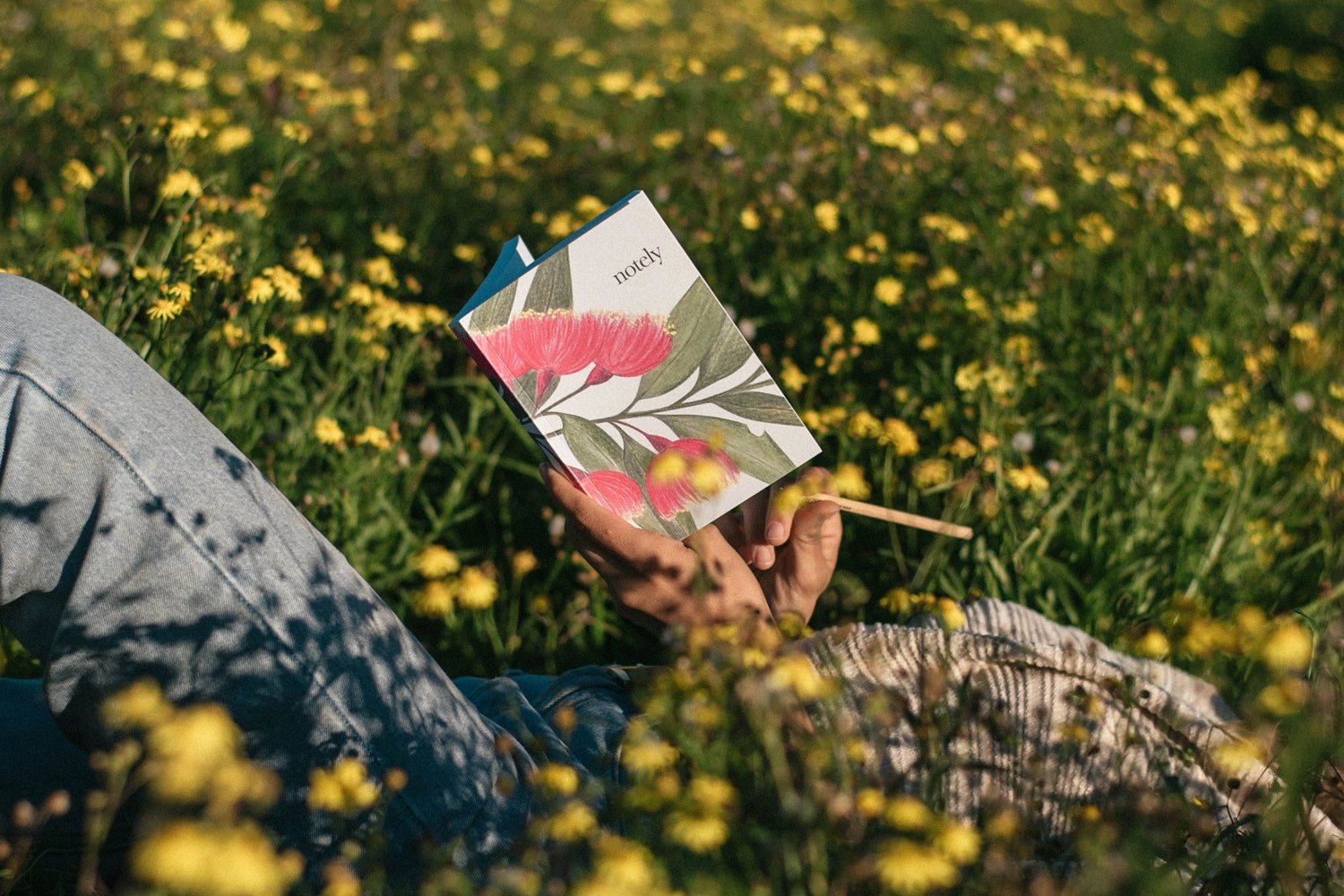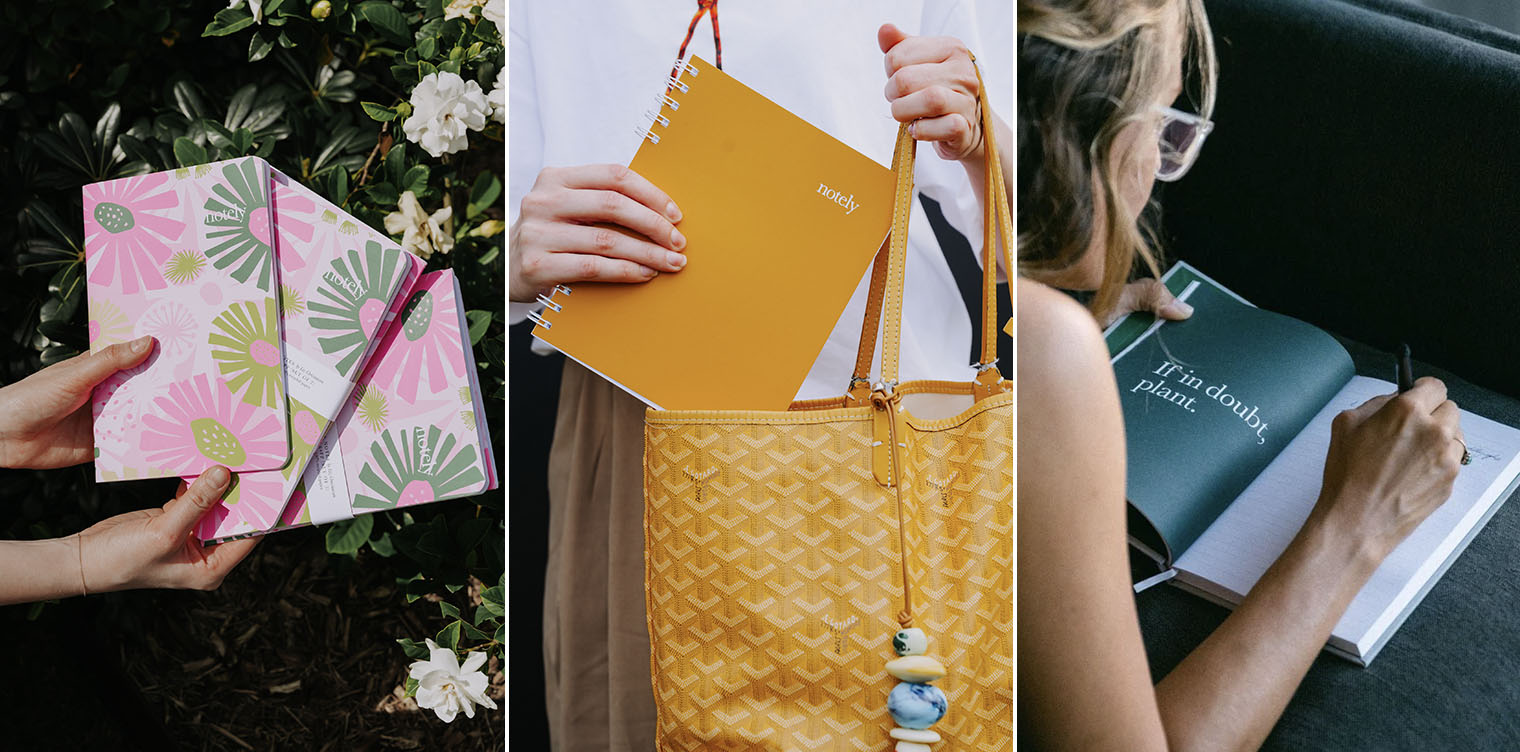Have you had the chance to check out our incredible wildflowers collection of journals and wall planners yet? It’s a celebration of the colour and joy flowers bring to our lives. And the inspiration for this post, in which we’re going to deep dive into the wonderful world of wildflowers and reveal how you can use them to guide and inspire your journaling practice.
Journaling is a powerful tool for self-care, personal growth and creativity. It helps to keep you organised and on track so you can live your best life. And it plays an important role in mental health by allowing you to record your thoughts, experiences and emotions in a tangible form.
Whether you're using one of our recently released wildflower journals and notebooks or one of the many other sustainable stationery products in our range of journals, notebooks and wall planners, you’re likely already experiencing the benefits of freely expressing yourself, keeping on top of things and gaining a deeper understanding of your inner world.
There are as many approaches to journaling as there are people who love to journal. Some love nothing more than to write, paint or draw with wild abandon, writing or drawing anything that comes to mind in the moment. Others take a more structured approach, using prompts and themes to guide their entries. Still others mix and match techniques to achieve a particular purpose.
No matter which approach you prefer, the intense beauty of wildflowers provides a unique and visually captivating source inspiration for your journaling practice.
So, grab your Wildflower notebook, Australian Natives pocket notebook or blossom journal and let’s kick off your wildflower journaling journey by taking a look at the meanings and symbolism associated with different wildflowers.
Then we’ll explore some ways in which you can draw on the inspiration these blooms bring to reveal important life lessons and philosophies and send secret messages to your future self.
The language of flowers
Throughout history, people around the globe have assigned meanings to flowers and used them to convey sentiments and emotions through their colours and symbolism. Wildflowers, in particular, have their own special symbolism, often rooted in their natural habitats and characteristics.
This language of flowers, known as floriography, was popular in England and Australia during the Victorian era, when people exchanged messages through carefully chosen blooms.
More recently, Australian author, Holly Ringland, created a floral language dictionary in her book The Lost Flowers of Alice Hart (recently brought to life in a television series starring Sigourney Weaver). In it, she exquisitely captures the meanings of Australian native wildflowers.
Here are some examples of wildflowers and their meanings that you can use to guide your wildflower journal entries.
Australian wildflowers
Being a Brisbane-based sustainable stationery business, we might be a little biassed, but even so, there’s no denying Australian wildflowers have a unique and powerful allure. Here are a few of our favourites along with their meanings.
Waratah: This striking red flower is native to New South Wales and symbolises love, passion and courage. Choose the waratah when you want to explore matters of the heart or when you need to be brave in the face of challenges.
Kangaroo Paw: The kangaroo paw, with its unique shape and vibrant colours, represents creativity, transformation and adaptability. Use it as a source of inspiration for creative growth and a symbol of adaptation in your journal entries.
Banksia: Banksias are known for their hardiness and ability to adapt to various environments. They signify resourcefulness, resilience and new beginnings. Draw on their strength and beauty when life calls on you to show resilience and adapt to change.
Billy Buttons: These bright yellow globes symbolise optimism, joy and happiness. Turn to billy buttons when you want to focus on cultivating positivity and finding joy in everyday things.
Sturt's Desert Pea: This dramatic, dark-red wildflower grows in the harsh Australian outback. It represents bravery, strength and the ability to thrive in harsh conditions. Use the Sturt's Desert Pea to inspire inner strength, courage and perseverance in times of hardship.
Classic wildflowers
Ever wondered about the meanings of the flowers in your garden? Here are some meanings for the classic wildflowers you might find in local parks and gardens
Lavender: Often associated with tranquillity and calmness, lavender can be a wonderful choice to include in your journaling practice if you're feeling stressed or seeking peace in your life. Pick a fragrant flower or leaf and inhale the calming aroma while you write.
Sunflower: As the symbol of happiness and optimism, sunflowers can help you focus on the bright side of life, even in challenging times.
Forget-Me-Not: These delicate blue flowers represent remembrance and can be a great choice for reflecting on cherished memories or relationships.
Daisy: Daisies symbolise purity and simplicity, making them ideal for journaling to obtain clarity. They are also useful for reflecting on purity of intention and for finding beauty in simplicity.
Wild rose: The wild rose represents love and passion. Use it as your inspiration when journaling your way through romantic relationships and desires.
Incorporating Australian wildflowers into your journal

Wildflowers and their meanings will help to guide your journaling practice, adding depth and purpose to your entries. This type of journaling helps you to reflect on specific emotions, aspirations or challenges and provides a fresh perspective on your life journey.
Here are some creative ways to weave wildflowers into your journaling practice.
1. Create your own floral dictionary
Explore your backyard or the parks in your town, go bushwalking or browse wildflower images you find online. Then grab a journal or notebook and draw or write a description for the flowers that inspire you. Create your own meanings for each bloom based on the thoughts and feelings they stir up inside you.
2. Write a wildflower letter
Choose a wildflower and research its symbolic meaning, then write a letter to a friend using that flower's language.
3. Press and preserve flowers in your journal
After selecting and picking your wildflowers, preserve them by pressing them in tissue paper using a heavy book or flower press. Once they’ve dried, you’ll be able to glue them into your journal, creating stunning visual entries. Beneath each bloom, note the type of wildflower and its significance and reflect on what it means to you.
4. Create floral headers
Use dried wildflowers to create beautiful headers for your journal entries. This will not only make your blossom journal visually appealing, but also tie in the meaning of the flowers with your thoughts and reflections.
5. Draw or paint floral motifs
Incorporate illustrations or watercolour paintings of your chosen wildflowers as decorative motifs along the borders of your notebook or journal pages. This adds a personal touch and enhances the overall aesthetics of your journal, which can help to inspire you.
6. Use flower-powered journaling prompts:
There are several ways to use wildflowers as prompts for journal or notebook entries, short stories, music, lyrics, drawings or poems.
- Choose a flower in a wildflower dictionary and write about it in your plant journal or bottle blush notebook.
- Draw a card from a wildflower affirmation card pack and use it as the starting point for your daily stream of consciousness journaling practice. Holly Ringland’s beautiful Be your own wildflower affirmation cards serve as a fantastic source of inspiration for wildflower journaling.
- Pick a flower from your garden and write a journal or notebook entry that aligns with its meaning. For instance, if you're working with waratahs, your prompt could be, ‘How can I cultivate more love, passion and courage in my life?’ Or, if you've selected lavender, your prompt might be, ‘How can I bring more tranquillity into my life today?’
7. Gather flowers on nature walks
For a more immersive experience, head out into nature. Take a walk through local landscapes and collect the wildflowers that inspire you. Press or draw them and write about the experience and your connection to nature in your journal or notebook.
8. Sketch or paint the flowers you love
You don’t have to be an artist to take out some pencils or paints and sketch or paint the wildflowers that stir your creative spirit in your art journal. This practice not only connects you with the flowers' symbolism but also enhances the creative aspect of your journal.
Wildflowers, with their unique beauty and symbolic meanings, can serve as powerful guides for your journaling journey. Their delicate beauty and resilience will resonate with your emotions, stir up your creativity or help you take on life’s challenges. Incorporating them into your journaling practice will refresh, renew and reinvigorate your mind, body and soul.
Wildflower journalling allows you to infuse your journals and notebooks with layers of meaning and intention, creating a unique and transformative journaling experience.
Get started today with our wildflower collection
As you embark on your next journaling adventure, let our Wildflowers Collection be your muse. The exquisite flowers adorning these notebooks, A2 Portrait 2024 Wall Planners and the A1 Landscape 2024 Wall Planners were painted by Jenica Smith, the founder of Notely herself. Every brushstroke reflects her passion for the natural world. Let the kaleidoscope of colours lead you on a journey through fragrant fields of flowers towards self-discovery, healing, and a deeper connection to the beauty of the natural world.
Like all our notebooks, sketchbooks, wall planners and journals, the Wildflowers Collection is environmentally friendly and sustainable. All our products use post-consumer and commercial waste, including FSC-certified recycled paper and card stock made from discarded coffee cups.
Plus, by purchasing Notely stationery, you’ll be helping us to reach our goal of replanting 100,000 trees by 2025. With one tree planted for every order, every three orders protect an extra two square metres of native rainforest.

![Spearmint A6 Pocket Notebooks [BULK 8 PACK] - Notely Lined](http://notely.com.au/cdn/shop/products/spearmint-a6-pocket-notebooks-bulk-8-pack-notely-399099_1600x.jpg?v=1699275130)








